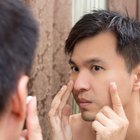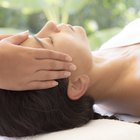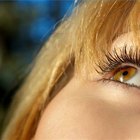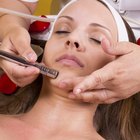
The skin is the largest organ in the body and is easily affected by light. Most people know that exposure to sunlight can give them a tan, but light can also be used as a method of therapy. This kind of treatment, known as phototherapy, uses similar types of light as tanning beds, but the latter are not designed for medical purposes.
Light Therapy Uses
Phototherapy can be used to treat some systemic problems, such as jaundice and seasonal affective disorder. This type of phototherapy use many different kinds of light and cannot be duplicated with tanning beds. Other conditions, such as psoriasis, use ultraviolet light, which means that they use similar light wavelengths as tanning beds.
Ultraviolet Light Types
When ultraviolet light is used for phototherapy, it comes in two different varieties, the New York Times explains: UVA and UVB light. UVA light makes up most of the ultraviolet light in the sun. UVB light has more of an effect on skin cells and is responsible for sunburn. Its increased potency means it's better suited for treating diseases such as psoriasis.
How Phototherapy Works
Phototherapy is used to slow the growth of skin cells, helping to break up the lesions that cause psoriasis. UVB light is powerful enough that it can be administered in short bursts several times a week to be effective. UVA light is less potent and is typically only used in conjunction with medications, such as psoralen, which sensitize the skin to light.
Tanning Beds and UV Light
Tanning beds also work by emitting ultraviolet light, but they primarily emit UVA light, the National Psoriasis Foundation says. This means that unless the patient uses psoralen, tanning beds can't be used to treat skin disorders. In addition, these devices aren't designed for medical purposes, which means that the amount of light emitted by the lamps is not as carefully regulated. Although tanning beds could be theoretically used for psoriasis, the National Psoriasis Foundation does not recommend their use.
Risks
Light therapy carries some of the risks of sun exposure, such as advanced aging of the skin and an increased risk of skin cancer. These skin problems are generally associated with UVA light, which means that patients using tanning beds for light therapy have a greater risk of developing these problems after light exposure.
Related Articles

How Does Ultraviolet Light Affect ...

Blue Light Therapy for Cystic Acne

Can LED Light Get Rid of Brown Spots on ...

How Does a Tanning Bed Work?

Levels of Polarized Sunglasses

Dangers of Spray on Tan

Review of New-Skin Scar Therapy

Uva Vs. Uvb Tanning Beds

How Much Do Tanning Beds Cost to Run?

What Are the Manipulations for a Facial ...

Side Effects of Certain Dri

Acne & Antibacterial Soap

Do Swimmers Have More Acne Breakouts?

UV Tanning Vs. Spray Tanning

Substitutes for Low-fat Yogurt

The Levels of Tanning Beds

How to Make Toasted Bread Sticks With ...

Bronzer Vs. Turbo Tanning Bed

How to Remove Scars Caused by Insect ...

Fraxel Laser Treatment Dangers
References
Writer Bio
Adam Cloe has been published in various scientific journals, including the "Journal of Biochemistry." He is currently a pathology resident at the University of Chicago. Cloe holds a Bachelor of Arts in biochemistry from Boston University, a M.D. from the University of Chicago and a Ph.D. in pathology from the University of Chicago.
Photo Credits
Stockbyte/Stockbyte/Getty Images